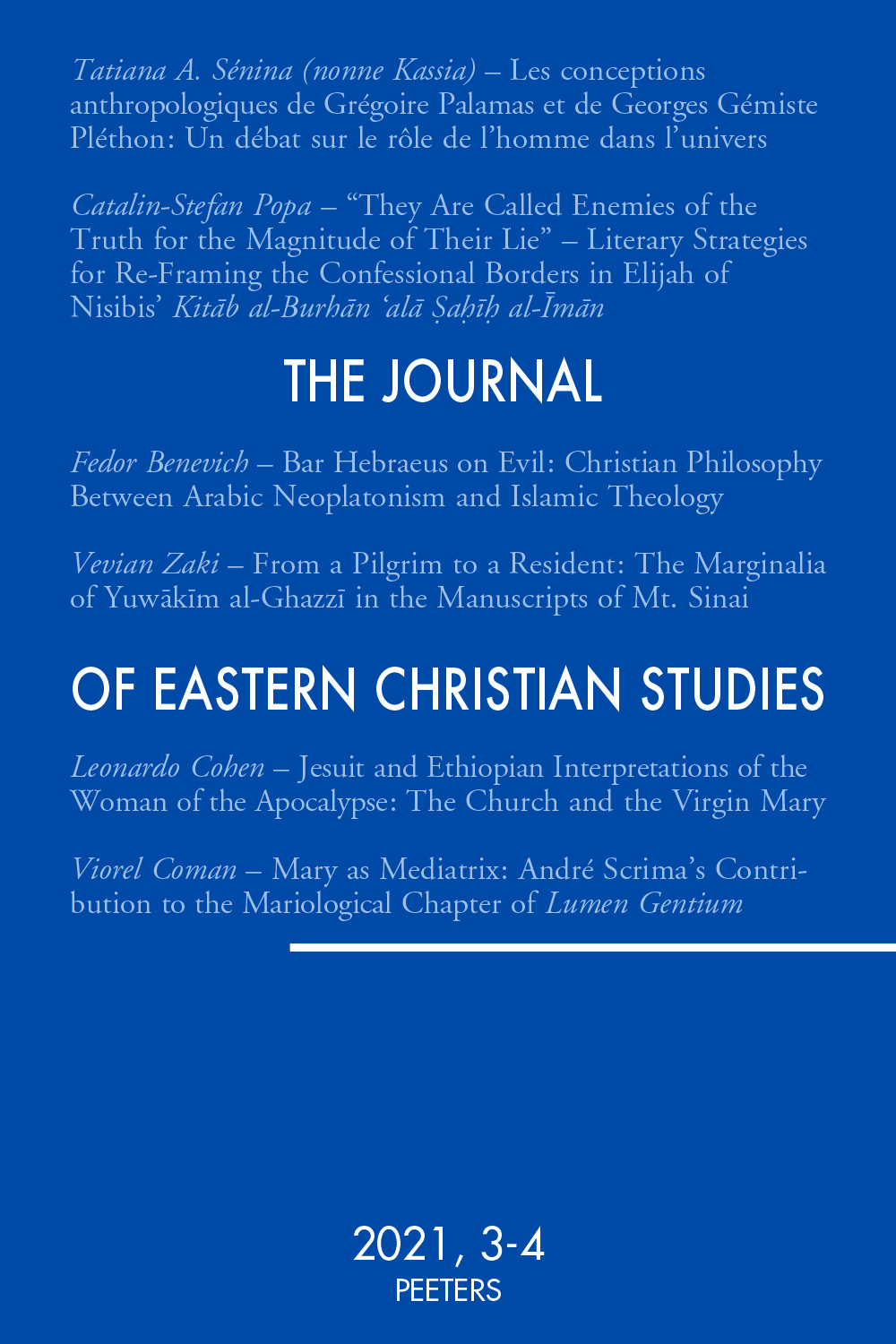 previous article in this issue previous article in this issue | next article in this issue  |

|
Document Details : Title: Demanding a Religious Place Subtitle: Three Female Christian Visionaries in the Middle East Author(s): JANSEN, Willy Journal: Journal of Eastern Christian Studies Volume: 63 Issue: 3-4 Date: 2011 Pages: 311-332 DOI: 10.2143/JECS.63.3.2149624 Abstract : Recently, a number of scholars have attempted to bring to light the forgotten and neglected history of religious Christian women in the Middle East. For this paper I will review this literature and compare the life stories of three female mystics in order to understand whether and how these women challenged the contemporary religious hierarchy, the authorities and the gender structures by demanding a space for women using a visionary discourse. Both the particularities and the commonalities of the three lives will be analyzed, in particular how they created space for women by the foundation or strengthening of religious orders. The mystics discussed are the Roman Catholic Sister Marie-Alphonsine (1843-1927), who founded the Congregation of the Sisters of the Rosary in Jerusalem after visions of Mary instructing her to do so, the Maronite Hindiyya ‘Ujaimi (1720-1798) who during episodes of ecstasy communicated directly with Christ, was blessed with his stigmata and felt called to form the Order of the Sacred Heart on Mount Lebanon, and Boutrosiya Shabaq al-Rayes (1832-1914), better known as Saint Rafqa. The latter also asserted her autonomy by refusing to marry and followed a vision when choosing which order to join. It is argued that their life histories show a remarkable agency of women in the religious domain, despite their use of different strategies. Most important among these were their strategic use of religious connections - also across denominational lines – and of mystic experiences through which they could redefine their gender, national and religious identities. |
